
Does YOUR town have English ivy covering trees in its most prominent public spots? Well, MINE SURE DOES, which I finally got sick of looking at and decided to do something about it. At LEAST here in our historic town square.
(Why do it? This link explains the many ways that English ivy can harms trees, but a lesser-known harm is from the berries it produces after it’s grown vertically and matures. Birds eat them, spreading the ivy all over the place. It also spreads by runner, so its spot on Maryland’s invasive list is well earned.)
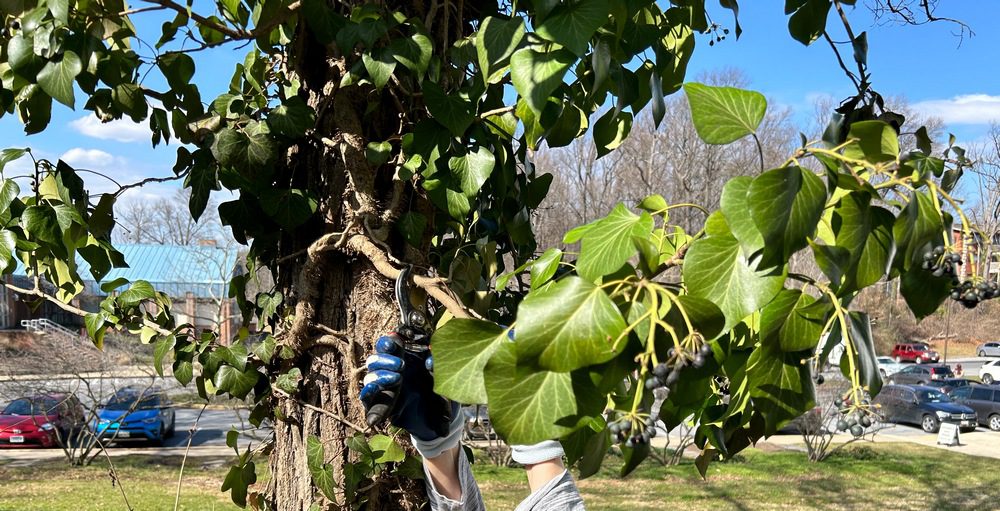
Ivy berries can be seen here, growing about 6 feet from ground-level. Also notice that the leaves become heart-shaped.

Our “New” Garden Club Takes Action
I was prepared to heroically rescue all these trees by myself, a notion I can now see was ridiculous. This tree rescue would take a village…or at least the village’s garden club.
Luckily I remembered that we have a garden club in my town now and wondered if others in the club might be interested in helping. When I moved here 12 years ago, to a town with no garden club, I thought about starting one but oy, the work involved! Been there. Thankfully, the venerable garden club of a nearby town recently expanded to include us, with a combined new name – the Greenbelt-Beltsville Garden Club. So we suddenly have a club, without the need for new officers, bylaws, dues, speakers, et cetera.
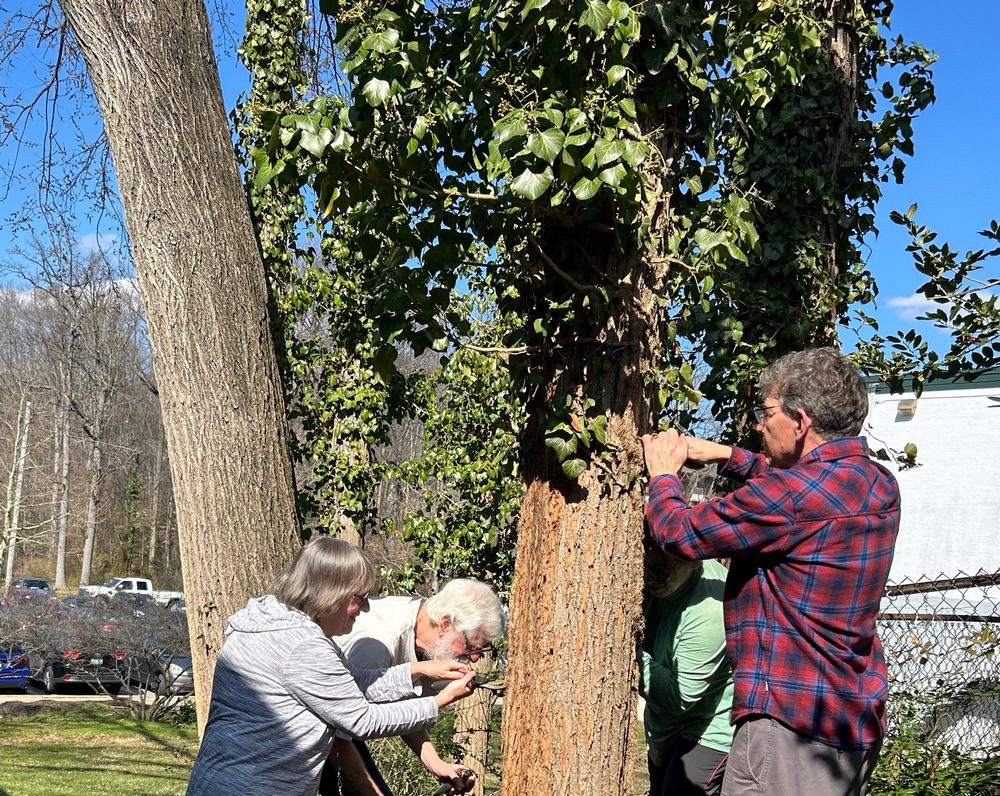
And best of all, its leadership is very effective! So I just had to drop a hint and bam! Our can-do president (Melissa Mackey, above) quickly got the official okay from the city and our first Ivy-Off was scheduled for the very next Sunday, with another event the following week to keep at it.
An Obsession Takes Hold
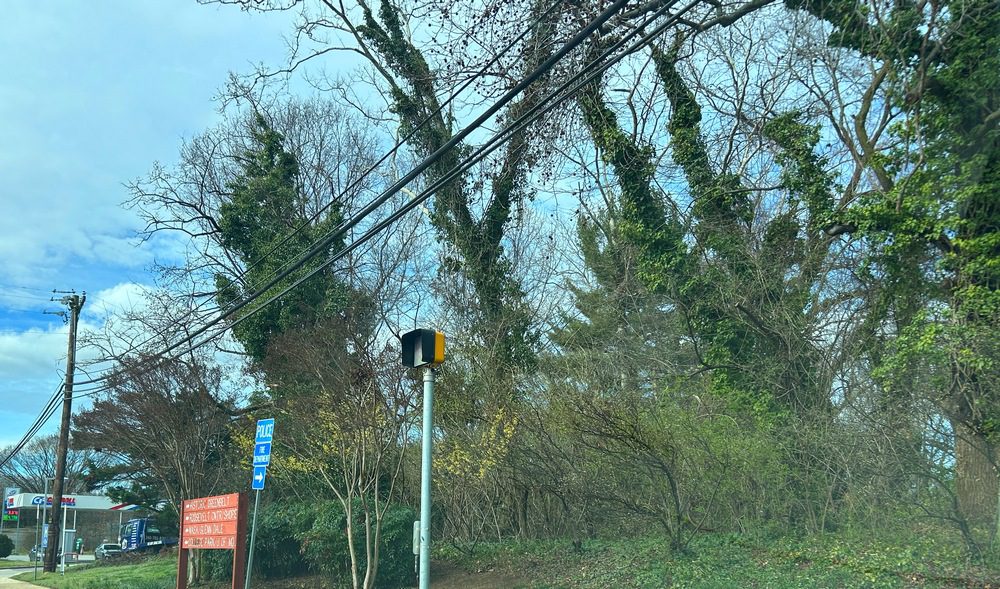
From the club we formed a motivated group of tree rescuers, and my local blog post yielded two more volunteers – so yay! But sadly, there are HUNDREDS of other ivy-covered trees on city property, so where next to target our efforts? We chose this major infestation at the entrance to town, seen above. When a local friend told me she was embarrassed by such a public display of harm to trees at the entrance to our tree-proud city, I realized that I am, too.
And now that same friend – Catherine Plaisant – trudged into this jungle to saw trough all the ivy at human level. She’s a fast worker and uncovered about 10 trees in two hours. (I should say she began the slow process of uncovering them.)
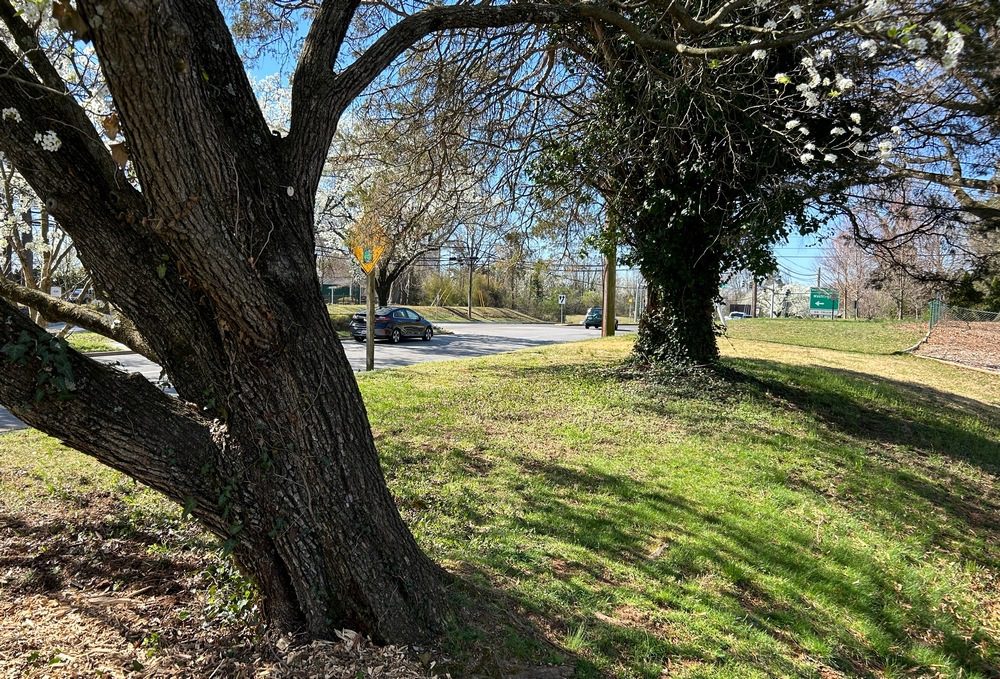
It’s an easier and longer-term fix to remove ivy from trees like these nearby that are NOT surrounded by ivy at ground level. So once the ivy is removed, it’s unlikely to grow back.
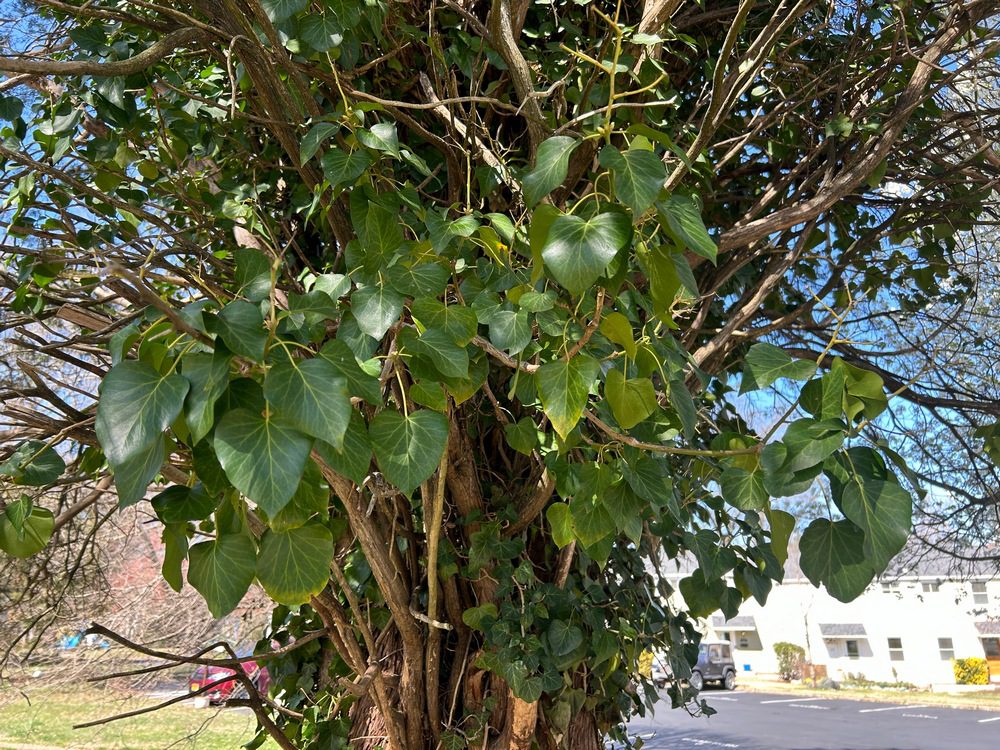
It will take a while – a year or more – for the damn stuff to die and fall off trees like this one. Not everyone will appreciate seeing the ivy’s visible decline during that time – it won’t be pretty – but hey, maybe it’ll spur more action.
Or not. Either way, there will be plenty for me to do. Ivy-removal is my newest addiction (or is it an obsession?), always satisfying the itch to get outside and DO SOMETHING productive. Freeing trees of the scourge of English ivy is about as satisfying (and healthy) an addiction as I’ve ever hand – like gardening itself.
What about English Ivy on the Woodland Floor?
As great as it feels to free up these trees in spots where they’re surrounded by sidewalks or turfgrass, it’s hard to ignore the bigger picture: at the ground level, the woods around town are COVERED with English ivy. So without the budget to remove it and other invasives, replace them with natives and weed out the unwanted plants indefinitely, what can we do?
I guess what we’re doing is triaging the hell out of a crappy situation, focusing on getting the damn English ivy off of trees so that it doesn’t harm them or spread to places not already covered with it.
Or readers, can you suggest anything else?
How to Safely Remove English Ivy from Trees
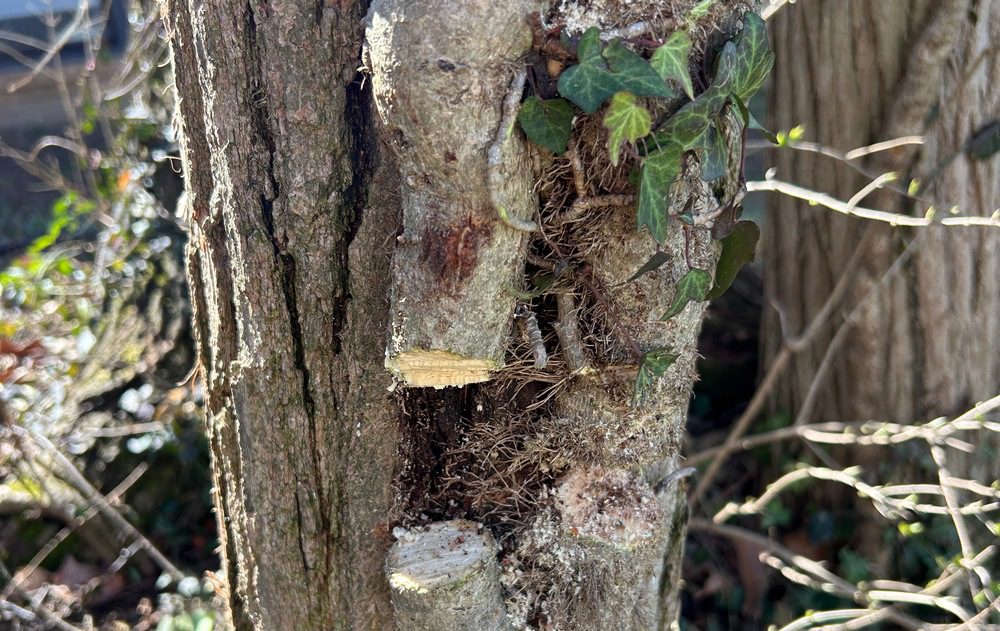
As recommended by arborists everywhere (like this one), it’s best to remove some lower portion of ivy stems, without trying to pull it down from the trees, which can damage the bark. In the photo above, everything above this cut will gradually die and fall down – safely – over the next year or so.
This video by some Virginia Master Gardeners shows how to do it, and more on why it’s so important.
Tools needed? Club members used a folding hand saw, loppers, hand pruners, knives and regular screwdrivers (for wedging under and removing stems after they’ve been cut through).

